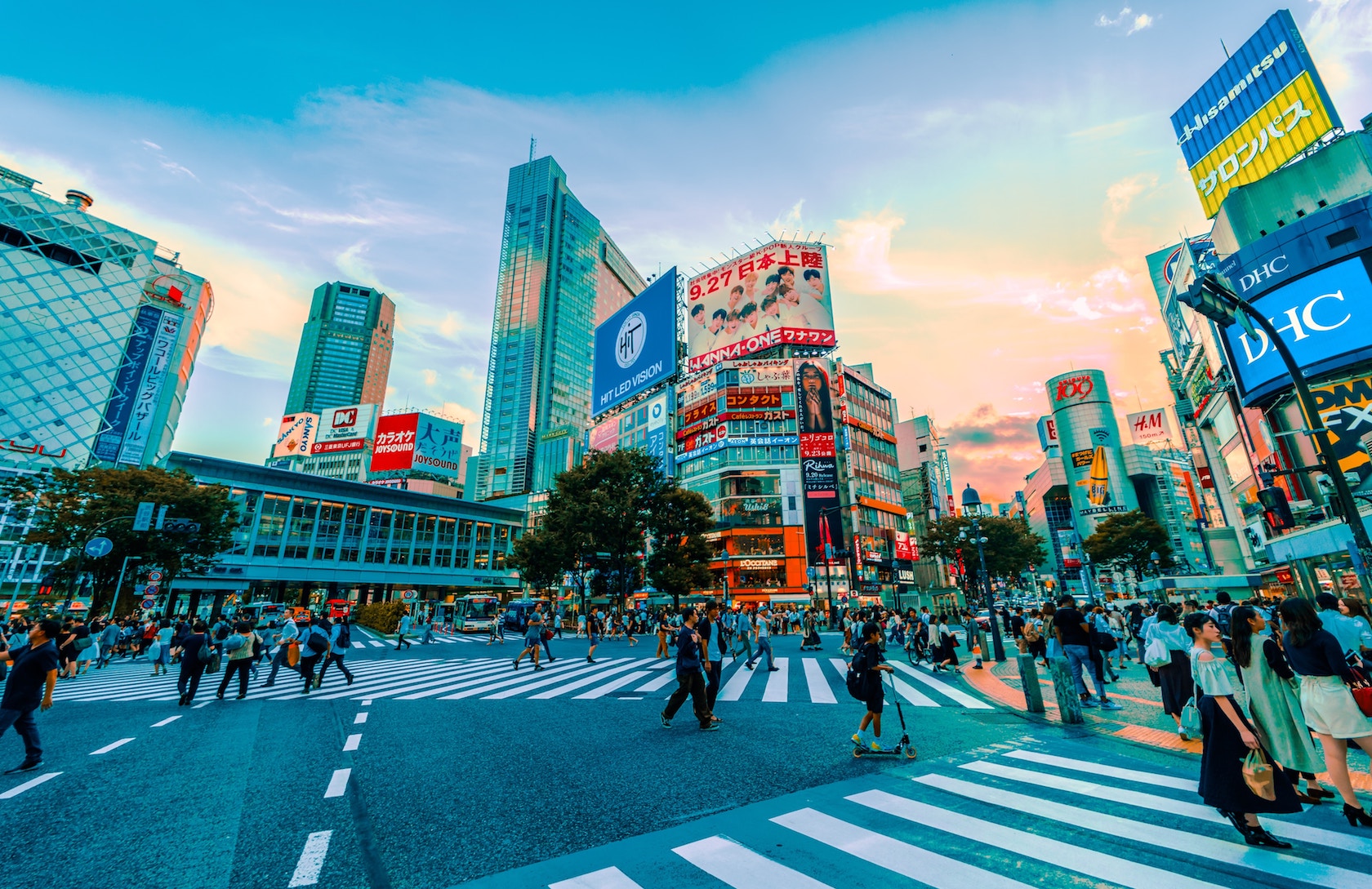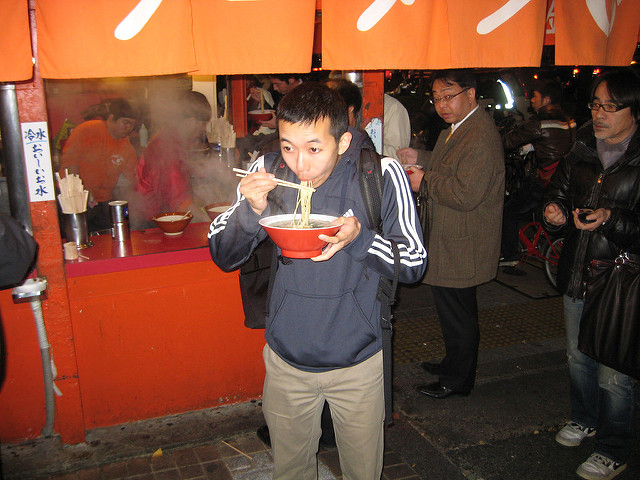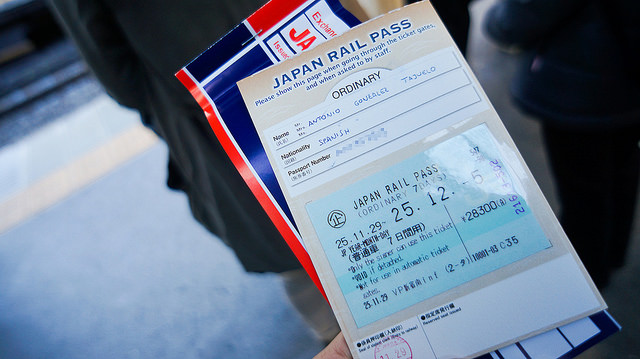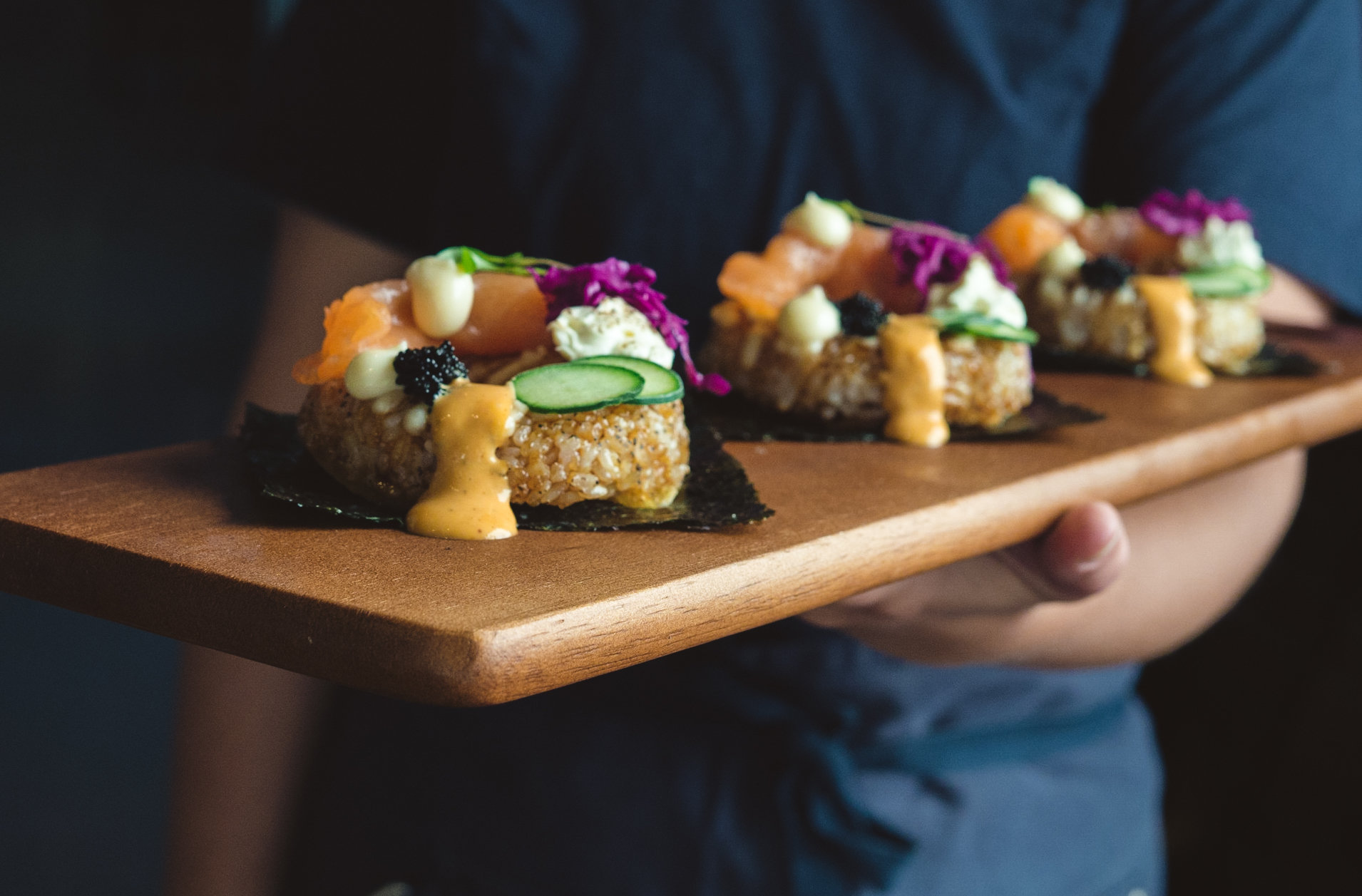9 Tips For First-Timers Going To Japan

Sarah Smith is a broadcaster, writer and wanderer. She has…
If you’re planning a trip to Japan, there’s no doubt you’ll be bombarded with recommendations from friends who’ve already been.
There really is no other country like it, and with so much to do, it’s a holiday destination that demands multiple visits. Here are few things it helps to know before making your first visit to Japan even better.
[related_articles]40882[/related_articles] [listicle]It’s kind of rude to eat and walk

It is very rare for Japanese people to consume food or drink while walking. Culturally, it’s considered rude to do so, and even though coffee shops offer “take-away”, most locals will sit in a café rather than slurping it down on the run. It’s also not uncommon to see someone buy a can of soda from a vending machine, drink it on the spot and then dispose of it in the bin provided.
The same goes for food. It’s okay to grab a snack and sit and eat it in a park or on a bench, but it’s best to avoid running for a train while trying to down the last of your morning muffin. Which brings us to our next point…
Image: David Woo / Flickr
There are very few bins
It’s a great idea to carry a plastic bag with you whenever you’re out and about in Japan, because there are very few bins in public. And practically none in train stations and public parks.
This is, in part, because many of them were removed following the 1995 Aum Shinrikyo terrorist attack, but also because the Japanese are really, really good at recycling. People are encouraged to take their rubbish home and sort it out, so the public bins that do exist are often split into various recycling categories.
Because of this, Japan now has a plastic recycling rate of roughly 77% – twice that of the UK.
PT is your best friend (once you nail the system)

Yes, the train stations in Japan can be a little confusing, but the public transport system is also extremely efficient and much cheaper than taxis. Trains run on two lines – Metro and JR – and it’s worth downloading Google Maps to help navigate them, because it’s synced with the public transport system around the country.
The bigger stations can feel like labyrinths, so it’s best to allow at least half an hour between arriving at the station until the time you need to board a train for “getting lost time”. And, when in doubt, just ask for help. There is plenty of English signage and train stations are really well-staffed. Despite the language barrier, ticket officers are used to helping confused tourists and are very accommodating.
It’s also worth noting that, in Japan, the train system is set up to help you rather than fine you. As such, if you arrive at your destination only to find you didn’t purchase the right ticket you can simply pay the difference at a special top-up machine.
Suica cards are a breeze
While the ticket machines at train stations offer an English option, the amount you pay varies dependant on your intended destination, making it a little time-consuming trying to work out the exact amount for each trip. So, if you’re staying in the one city for more than a few days, it’s worth buying a Pasmo or Suica card, which can be used on most public transport around Japan. It allows you to simply tap on and tap off, and can also be used to purchase goods at some convenience stores and vending machines.
Consider a JR Pass

If you’re travelling on a bullet train between cities, it’s worth considering the purchase of a JR pass. It’s best to check price guides, but a seven-day pass is worth roughly the same as a return trip from Tokyo to Kyoto. They can also be used to ride on any of the JR lines around the country.
There are 7, 14 and 21-day passes available and they must be ordered before you arrive in the country. When you do, you’ll receive a coupon in the mail that can be exchanged for a JR pass at various outlets. There’s often a long line at the airport JR counters, so delay activating the pass until you reach a JR desk at one of the major train stations instead. And don’t forget to take your passport!
Photo: Antonio Tajuelo / Flickr
It helps to speak just a little Japanese
It’s pretty easy to get around Japan knowing very little Japanese. There’s a lot of English signage and there are often pictures (or plastic replicas) of meals in restaurants, so you can see what you’re ordering. Plus, most Japanese people are very patient with English-speakers and will try and help you regardless of the language barrier.
But it really is polite to know at least the most basic exchanges so you can thank someone appropriately when you do need help. The two most useful (and commonly heard) phrases are: “arigatou gozaimasu“ [ah-ree-ga-toe go-za-ee-mas], which means “thank you very much”; and “sumimasen” [sue-mee-mah-sen], which can be used to say “excuse me” or “I’m sorry”.
No tipping
There are some exceptions to the rule, but for the most part there is no tipping in Japan. In fact, in many cases it would be considered rude to leave extra money after service.
Leave extra luggage room for your return flight

It is almost impossible to visit Japan and not buy something, so it’s best to factor in a few extra kilos for your return flight. The country’s vintage shops and record stores are world-famous for good reason and, in Tokyo, you can visit entire districts dedicated to selling musical equipment and technology alone.
Japan also excels at cute-as-hell souvenirs. Loft is a Myer-sized department store chain that has entire levels dedicated to the stuff: one whole floor is stocked with stationery; another, Japanese kitchenware; and, another, Japanese art. Whatever your preference, you’ll be returning home with a lot more than a fridge magnet.
Take off your shoes
There are a number of instances where you’ll be required to take off your shoes. These include: when entering a change room to try on clothes; when frequenting a traditional Japanese teahouse or restaurant – especially where there is zashiki (floor seating) — when entering someone’s house; and when going to an onsen (bath house).
On some occasions, you’ll be provided with slippers to wear and most always there will be a sign and/or the host will indicate that you need to remove your shoes, so there’s no need to worry about it too much.
You will never fit it all in

There is simply so much to do (and eat) in Tokyo alone that you’ll never fit in everything you want to do on your first visit. While some people like to keep their holidays jam-packed, Japan is a really beautiful place to get a little lost.
If you’re visiting Kyoto, pick a couple of the best shrines and leave time to wander the beautiful streets in the evening. And, yes, the Robot Restaurant in Tokyo is awesome but, if you can’t make it, just grab some delicious snacks from a 7-Eleven and spend the afternoon getting lost with the artists and crows in Yoyogi park instead. You won’t regret it. [/listicle] [media_embed]https://youtu.be/YAFp-pl3a2w[/media_embed]
(Lead image: Jezael Melgoza / Unsplash)
Sarah Smith is a broadcaster, writer and wanderer. She has gotten lost in a Mexican jungle, hitch-hiked through Cuba and driven in LA. You can read her tweets at @sarah_smithie.









